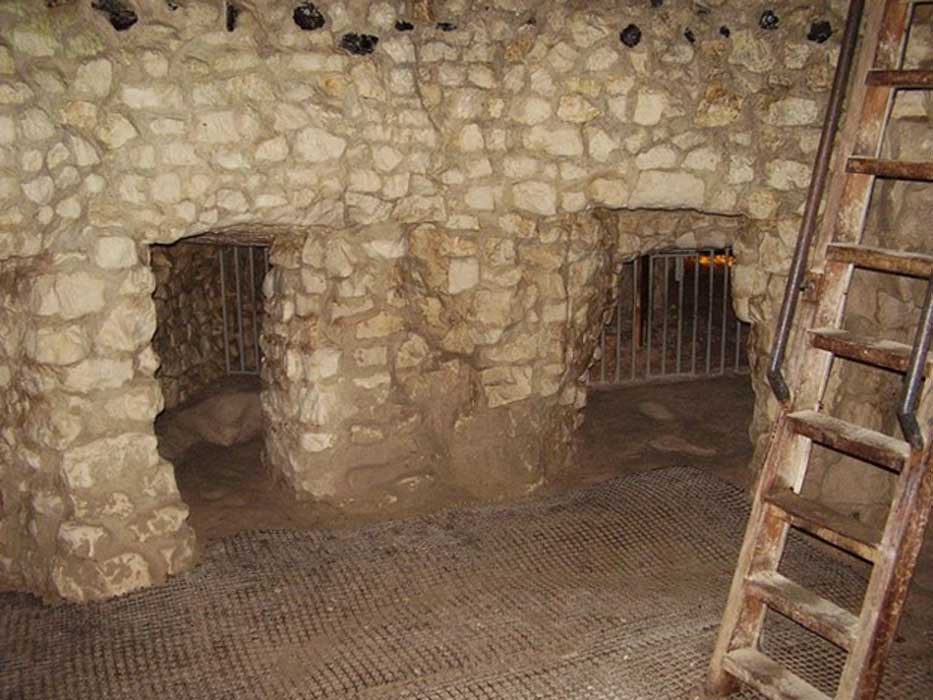Grime's Graves: 5,000-Year-Old Flint Mine Opens a Window to the Past
Grime's Graves is a spectacular Neolithic flint mining site located near Thetford Forest, Norfolk, in the East of England. Beginning around 5,000 years ago, and continuing for an entire millennium, Stone Age peoples mined ‘floorstone’ flint beneath more than 10 meters of chalk. They used only deer antlers to create more than 400 shafts. When they finished with a shaft, they back-filled it, leaving the crater-filled landscape that we see today.
The knowledge that flint was exploited from this site was lost some time after the Neolithic period, and it was only during the latter part of the 19 th century that the original function of Grime’s Graves was rediscovered.
The first thing that one may notice about Grime’s Graves is perhaps its name. Whilst flint was exploited in this area by people living during the Neolithic period, its current name was only given at a much later age. According to some sources, this area was once identified as the resting place of the Devil. According to other sources, the site was associated by the Anglo-Saxons with Grim, a chthonic deity in their pantheon (sometimes identified as Woden). The name given by the Anglo-Saxons to this site may be translated as ‘the quarries of the god Grim’, an indication that they may have been aware of the flint deposits.
The landscape of Grime’s Graves can be described as somewhat peculiar. Looking at an aerial photo of the site, one ca see a grassy landscape covered by pits. It has been estimated that there are about 400 of these pits scattered over an area of 90 acres. Incidentally, these pits have sometimes been referred to as ‘the Devil’s Holes’. This odd landscape was variously interpreted by English antiquarians. The famous Elizabethan antiquarian, William Camden, for example, thought that the site consisted of ‘small trenches and ancient fortifications’, whilst the 18 th century antiquarian, Francis Blomefield (who was from Norfolk), believed that the pits were ‘Danish encampments’.

An aerial view of Grime’s Graves. Photo source: English Heritage.
It was only during the 19 th century that these pits were excavated. The first excavations occurred in 1852, when two of the pits were dug by the Reverend Pettigrew, whilst several others were opened up by the Reverend Manning. Several more pits were excavated by the latter when he returned in 1866. These early excavations, however, were poorly recorded, and are not of much use.
It was in 1868 that Canon William Greenwell began his excavations at Grime’s Graves. This lasted for two years, and the results produced are more significant those of Pettigrew and Manning. Amongst other things, Greenwell discovered red deer antler picks (the main mining tool) and a stone axe made of Cornish greenstone. In the gallery where the axe was discovered, the canon was also able to find impact marks made by the blade of this tool on the chalk walls.

An illustration of ancient flint mining (miningfocus.org)
From the tools that he found, Greenwell deduced that they belonged to the Neolithic period. From this, the canon was able to demonstrate that flint mines were prehistoric in date. This was the first time that such a demonstration cold be made anywhere in Britain. Greenwell’s discovery was not without controversy, however, as there were those who argued that flint mining had already been carried out during the Palaeolithic period.

One of the galleries, radiating from the bottom of the 9m shaft, with artificial lighting. The view direction (NE) is approximate. (CC by SA 2.0 / Ian Taylor)
More pits were excavated over the decades, including Pit 15, arguably the most controversial pit at the site. This pit was excavated between 1937 and 1939 by Leslie Armstrong, an archaeologist who was hoping to prove that flint mining dated to the Palaeolithic period. One of the artifacts found by Armstrong during his excavation was a carved figurine dubbed as the ‘chalk goddess’. Although the figurine is said to look like others known to be from the Palaeolithic period, its discovery was greeted with scepticism. The authenticity of the figurine has been questioned, and it has been suggested that it was placed there deliberately by some unknown person during Armstrong’s excavations.
Further archaeological work was carried out in Grime’s Grave’s during the 1970s, including one by the British Museum between 1974 and 1976, which re-excavated Greenwell’s pit. So far, at least 28 pits have been excavated, providing archaeologists with information not only of the way these mines were used during the Neolithic period, but also what happened to them after it.
Top image: Grime’s Graves. Neolithic flint mine (CC by SA 2.0 / Ashley Dave)
By Wu Mingren
References
Crowhurst, R., 2006. Grime's Graves. [Online]
Available at: http://www.timetravel-britain.com/articles/stones/graves.shtml
Culture24, 2016. Grime's Graves Prehistoric Flint Mine - English Heritage. [Online]
Available at: http://www.culture24.org.uk/am11492
Engineering Timelines, 2016. Grimes Graves flint mines. [Online]
Available at: http://www.engineering-timelines.com/scripts/engineeringItem.asp?id=288
English Heritage, 2016. Grime's Graves. [Online]
Available at: http://www.english-heritage.org.uk/visit/places/grimes-graves-prehistoric-flint-mine/
Ross, D., 2016. Grimes Graves. [Online]
Available at: http://www.britainexpress.com/articles/Ancient_Britain/grimes-graves.htm
The Prehistoric Society, 2016. Grime’s Graves Neolithic flint mines. [Online]
Available at: http://www.prehistoricsociety.org/places/place/grimes_graves_neolithic_flint_mines/
Topping, P., 2003. Grimes Graves. [Online]
Available at: http://www.archaeologyuk.org/ba/ba72/feat2.shtml



















